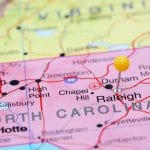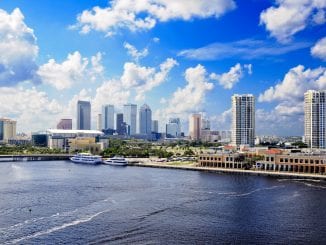
Map of Raleigh North Carolina Area
BOOK HOTEL IN ANY PART OF RALEIGH AT GREAT PRICES
Named for the famous Elizabethan colonizer, Sir Walter Raleigh, Raleigh, North Carolina, is among the fastest-growing cities in the U.S. and one of its number one business hubs. A beautiful city that’s popular with families, it’s a great place to visit and live with tons of history, amenities, and greenspace.
Where is Raleigh located?
Raleigh is the capital and second-largest city of North Carolina, conveniently placed in the state’s center. Located primarily within Wake County and extending into Durham County, Raleigh neighbors the towns of Rolesville, Wake Forest, Clayton, Morrisville, and Cary.
How big is Raleigh?
Raleigh is the second-most populous city in North Carolina after Charlotte. As of July 2019, the city center population was 474,069, with a metropolitan population of 1,390,785. Raleigh is one of the quickest-growing cities in the whole nation, with projections estimating a population of 2.2 million by 2040. That’s a 72% increase.
What is Raleigh known for?
Raleigh is called the ‘City of Oaks,’ a name given to the city in 1792. Gorgeous oak trees line many of its streets, and there are numerous historic trees throughout the city.
Research Triangle Park is another well-known feature of the city. It is the largest research park in the U.S. and named for the three research universities that surround it:
- The University of North Carolina at Chapel Hill
- Duke University
- North Carolina State University.
Raleigh is often called the “Smithsonian of the South” because it is home to many free high-quality museums and historical attractions. The city’s intelligent locals are proud of their blossoming metropolis’ unique experiences, showcasing the city’s heritage and culture. The following museums are all located within a few miles of each other:
- North Carolina Museum of Natural ScienceNorth Carolina Museum of History
- North Carolina Museum of Art
- CAM Raleigh
- Marbles Kids Museum
- City of Raleigh Museum
There are tons of places to explore Raleigh’s rich and long history as well, including the North Carolina State Capital and many historical houses, cemeteries, and neighborhoods.
Raleigh is also home to many natural attractions, from parks to trails and outdoor sports. Nearby beaches and mountains make living in this area a nature lovers’ dream.
- Lake Crabtree County Park is the perfect family getaway. Sixteen miles of trails on 215 acres, it’s a great place for scenic views, fishing, and hiking.
- Pullen Park is a public park just west of Raleigh. Playgrounds, aquatic centers, sports fields, and trails make this a convenient place to take a day trip.
- Neuse River Trail is a 28-mile trail stretching from Raleigh to Wake Forest. It’s an excellent greenway to jog on or take a break from the city to connect with nature.
Is Raleigh a good place to live?
Although Raleigh is known for retaining its Southern small-town charm, its blossoming metropolis and a highly desirable place to live. Residents are friendly and diverse, and since the city is home to three universities, its population tends to be well-educated.
A strong sense of community, beautiful green space, and a burgeoning art scene make this a family-friendly city. On the other hand, if you’re looking for that ‘big city vibe’ with a thriving nightlife, this might not be the city for you.
Raleigh also does not have a public transportation system, and the weather can be brutally hot. But ask any Raleigh resident, and they won’t hesitate to tell you that the positives of living there far outweigh the negatives.
What are the Neighborhoods of Raleigh?
Raleigh is an old city with a history stretching back to pre-revolutionary times. It is an early example of a planned city, and it’s home to many different unique and historic neighborhoods, including Oakwood, Stonehenge, Brier Creek, North Hills, and Apex. Let’s take a look.
Oakwood
Located just east of downtown, this neighborhood is the historic district that features hundreds of Victorian and Civil War-era homes. Many of these homes have been excellently preserved, and the neighborhood is a popular area for the city’s politicians and business elite.
Just outside the historic district of Oakwood, many first-time buyers are busy renovating and tearing down the area’s older houses. It is a popular area for families first-time homeowners alike since it’s just a few minutes from Raleigh’s thriving business district. However, the area is also known for its moderately high crime rate.
Brier Creek
An area that was mostly greenspace in the 90s, Brier Creek is an example of how quickly Raleigh is growing. Now it’s home to many single-family houses and condos, as well as many other amenities. The area is also home to Brier Creek Country Club, a luxurious golfing community and a hub for Raleigh movers and shakers.
Although it’s a new neighborhood and lacks some of the charm found in the historic districts, its proximity to two main interstates and the downtown core make it a convenient place to live. Within spitting distance of Research Triangle Park, it’s one of the main employment hubs of the city and contains some of the best schools in the city.
Stonehenge
Located in North Raleigh, this community began developing in the early 1980s and features more modest family homes. It’s a community in every sense of the word, with residents frequently banding together to host seasonal parades and Christmas light contests.
Nearby is the Seven Oaks Swim and Racquet Club, and the area is also close to downtown Raleigh and Research Triangle Park, making it ideal for residents who work in Raleigh. It’s also a popular place for seniors and retirees.
North Hill
A suburb of Raleigh not too far from downtown, North Hill is one of Raleigh’s fastest-growing neighborhoods, offering lots of green space, excellent schools, and tons of amenities. There are plenty of options for apartment rentals, and it’s a peaceful place to raise a family.
Apex
Last but not least, the Apex area of Raleigh is not only consistently listed as one of the U.S.’s best places to live (according to Money Magazine). It’s also one of Raleigh’s most historic regions.












